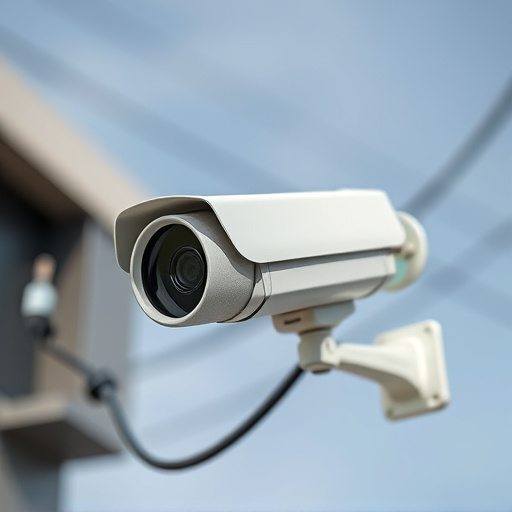Strategic placement of dummy security cameras at 2-3 feet above eye level with a downward angle, as per Dummy Security Camera Height Guidelines, optimizes coverage and deterrence while avoiding legal issues and physical damage, enhancing overall security measures for diverse environments and surveillance objectives.
“Enhance your home or business security with the strategic placement of dummy security camera brackets. This guide delves into the essential aspects of dummy camera height guidelines, offering valuable insights for optimal surveillance coverage. Learn how to navigate the maze of factors influencing installation success, from key height considerations to common pitfalls to avoid. Discover best practices to ensure effective monitoring and peace of mind.”
- Understanding Dummy Camera Placement Guidelines
- Key Factors in Determining Optimal Height
- Common Mistakes to Avoid During Installation
- Best Practices for Effective Surveillance Coverage
Understanding Dummy Camera Placement Guidelines
Placing a dummy security camera in the right spot is crucial for effective surveillance, even if it’s not recording footage. Dummy camera mounting brackets should adhere to specific guidelines to ensure optimal coverage and deter potential intruders. The ideal placement involves positioning the fake camera at a height that mimics real surveillance equipment.
According to Dummy Security Camera Height Guidelines, the simulated camera should typically be mounted 2-3 feet above eye level, angling slightly downward. This strategic angle allows for wide-angle vision, covering a significant portion of the monitored area without capturing sensitive information like license plates or personal details. Following these placement tips can greatly enhance the deterrent effect and overall security measures of your surveillance system.
Key Factors in Determining Optimal Height
When determining the optimal height for mounting a dummy security camera, several key factors come into play. Firstly, consider the area to be monitored; different environments necessitate distinct heights. For instance, in a bustling urban setting with tall buildings and heavy traffic, positioning your dummy camera higher can offer a more comprehensive view, capturing potential threats from various angles. Conversely, in a residential neighborhood or quiet office space, a lower height might suffice.
Additionally, the purpose of surveillance plays a role. If the goal is to deter crime or monitor entry points, ensuring the camera is at eye level or slightly elevated can be strategic. This placement mimics natural human vision, making it more effective in intimidating potential intruders. On the other hand, for wide-area coverage and crowd monitoring, a higher dummy camera height can provide a broader field of view, capturing more ground and reducing blind spots.
Common Mistakes to Avoid During Installation
Many DIY enthusiasts attempt to install security camera mounting brackets themselves, often running into issues due to common mistakes. One of the most critical errors is neglecting the Dummy Security Camera Height Guidelines, which can significantly impact the camera’s field of view and effectiveness. Mounting a camera too high or too low can result in blind spots, poor coverage, and even legal issues if it violates privacy regulations.
Another frequent mistake involves not accounting for environmental factors, such as weather exposure and potential obstacles. Brackets should be securely fastened to sturdy surfaces, avoiding areas prone to extreme temperatures, heavy winds, or physical damage. Insufficient securing can lead to bracket failure, causing the camera to become damaged or inoperable, compromising the entire security system’s integrity.
Best Practices for Effective Surveillance Coverage
To achieve effective surveillance coverage with dummy security cameras, it’s crucial to adhere to best practices and specific height guidelines for optimal visibility. One key aspect is positioning the cameras at strategic locations, ensuring comprehensive views of areas requiring monitoring. This involves assessing the layout of the space, identifying blind spots, and strategically placing camera mounts. Typically, mounting them at heights ranging from 5 to 10 feet (1.5 to 3 meters) above the ground offers a balanced combination of wide-angle coverage and clarity.
Adhering to dummy security camera height guidelines is essential for enhancing surveillance effectiveness. Cameras placed too low may not capture detailed footage, while those mounted too high might obscure important zones. Following these guidelines and utilizing high-quality brackets ensures that your surveillance system provides clear, detailed images, thereby fostering a safer environment by deterring potential intruders or miscreants.
When it comes to optimizing your security system, understanding the dummy security camera height guidelines is crucial. By considering factors like environment, lighting, and viewing angles, you can ensure effective surveillance coverage. Avoid common installation mistakes by adhering to best practices, ensuring your cameras provide clear, unobstructed visuals. Remember, the optimal dummy security camera height plays a significant role in maintaining a robust security network for your property or business.
